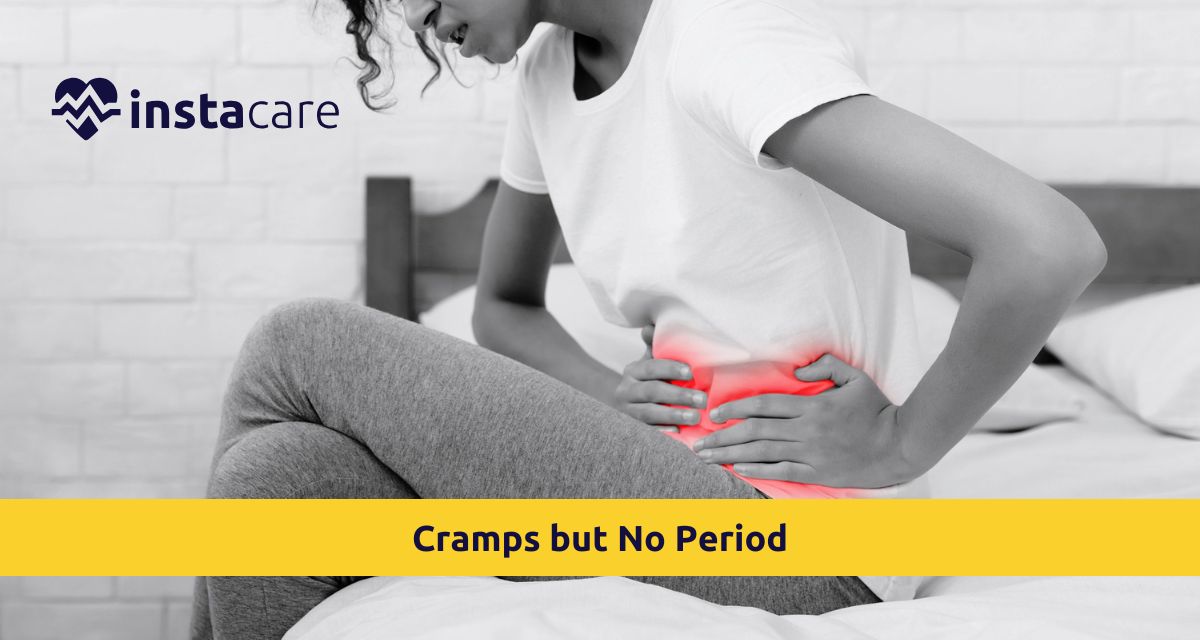Cramps in the absence of menses are one of the common but confusing and sometimes frustrating occurrences. Many people must ask themselves why they are having their cramps without a menstrual period. These cramps can be minimally worrisome to severely annoying and debilitating.
Understanding some of the possible causes, diagnostic approaches, and
management can be very helpful to those who experience this condition. This
article enlightens the multiple reasons that cause cramps without a menstrual
period as well as answers commonly asked questions and concerns.
Understanding Menstrual Cramps
Menstrual cramps, also known as dysmenorrhea, are most closely related to the contractions of the uterus when menstruating. These contractions are produced by prostaglandins. They are hormone-like substances that cause uterine contractions. One may feel mild to severe forms of discomfort. Some experience only minimal aching; others have debilitating discomfort with other symptoms such as:
- Bloating
- Mood changes
- Fatigue
- Headaches
However, if the cramps occur without a period, there might
be a tremendous variation in the causes underlying. There is a need to identify
the cause of this phenomenon since several factors contribute to it.
How to Diagnose Cramps No Period Involves
1. Pregnancy
Cramps without a period are primarily caused by pregnancy.
Early pregnancy brings about many changes in the body to support the
development of the fetus inside. As the uterus begins to expand in size,
sometimes women may experience cramps similar to menstrual cramps. Pregnancy
may also manifest through such other symptoms as
- Missed Period: The most apparent symptom that will call for
a pregnancy test.
- Nausea: It is popularly termed as morning sickness; however, it may occur at any time.
2. Ovulation
Another reason for cramps that do not necessarily result in
menstruation is ovulation. Some of the common characteristics of ovulation
cramp symptoms include the following
- Pain is local and mostly on one side of the abdomen.
- Duration: It may begin in a subject's period and thus end
several hours to days later, and therefore is likely to pass before any
menstrual flow.
- Information acquired about the menstrual cycle may therefore be used as a prediction of whether or not pain of cramps is felt during ovulation, especially with cycles that are irregular or significantly longer than normal.
3. Imbalances with Hormones
Hormonal imbalances may also partially affect the menstrual
cycle to bring about cramps without a period. An ordinary possible offender is
PCOS.
Symptoms:
- Irregular Periods: Cycles above 35 days or not present
- Weight Gain: Individuals have weight fluctuations
- Acne: The hormonal effect may result in acne on the skin
4. Stress and Anxiety
Except for physiological causes, the two psychological
factors that actually influence the menstrual cycle the most are stress and
tension. Stress causes hormonal imbalances. Specifically, this leads to missed
periods along with pain.
Among some common symptoms related to menstrual cycle
changes that may be caused by stress are the following:
- Mood Swings: Mood swings become much more apparent during
periods of acute stress.
- Fatigue: Greater fatigue occurs along with mental stress.
- Sleeping Disorder: It can lead to failure of sleep or abnormal sleeping pattern.
5. Pelvic Inflammatory Disease (PID)
This is grave infection in the organs of the female
reproductive system and usually results from un-treated sexually transmitted
infections. Even in the patient without a menstruation cycle, she will
experience extreme abdominal cramping.
These can be:
- Sudden Acute Pain in the Lower Abdomen: The pain may be
started suddenly.
- Fever: Body temperature can be present along with it.
- Abnormal Vaginal Discharge: Color and smell may be changed.
- Medical care is sought as soon as possible because the long-term complications are developed through un-diagnosed infections.
View More: 8 Signs Your Period Is Coming Tomorrow
6. Endometriosis
Endometriosis is a chronic disease characterized by the
presence of tissue within and outside the uterus similar to the uterine lining,
thus bringing on very severe pains at the time of menstruation. It can be hard
to keep track of menstrual cycles in the absence of such painful cramps that
come about throughout the cycle rather than during the periods themselves.
Symptoms:
- Dysmenorrhea: Painful periods-extremely heavy pain.
- Pain During Sex: Pain at the time of coitus or after
conducting.
- Heavy Menstrual Flow: It is also known as Heavy menstrual or
inter-menstrual bleeding.
- Diagnosis of endometriosis is non-invasive generally; however, a prerequisite for conducting imaging studies or even laparoscopic surgery is very common, so that a health care provider can examine the pelvic organs directly.
7. Ectopic Pregnancy
An ectopic pregnancy is when the fertilized egg implants
anywhere in the body except the uterus, typically in a fallopian tube. The
condition is only treatable as a case of emergency through extreme abdominal
cramps.
Symptoms:
- Vaginal Bleeding: Not typical menstruation.
- Dizziness or Fainting: Severe internal bleeding.
- Ectopic pregnancy suspected has to be treated with prompt hospital care.
8. Medication
Some prescription drugs may disrupt the menstrual cycle
leading to cramps, but not accompanied by the period. Such include
- Hormonal Contraceptives- Women under hormonal contraceptives
may at times begin experiencing non-regular bleeding or even miss their periods
- Antidepressants- Some in this class may also affect the
hormonal balance.
- Antipsychotics- They may interfere with this too
- Weight Loss Medication: This too may interfere with the
normal activity of the hormones.
You could also see a health provider who should be able to
advise you on any medication you are taking and perhaps assist in trying to understand
what could be happening in your menstrual cycle.
Differential Diagnosis of Painful Cramps Without Period
1. Medical History
Medical history is the first step in diagnosis2. Physical Examination
A diagnostic procedure, among other areas of a physical exam, can be accompanied by a pelvic exam that may check for potential signs of abnormalities such as PID, fibroids, or cysts; this would enable the providers to assess any abnormalities which may contribute toward the cause of the cramps.3. Imaging Tests
Most of the imaging tests are ultrasounds. These can visually inspect the reproductive organs and can assess structural anomalies such as cysts or fibroids. Such studies can thus affirm or negate certain conditions.4. Blood Studies
The blood test is helpful to determine the hormonal level. It also checks for pregnancy and makes sure that there is no anaemia or infections. The hormone panels are found to contribute to revealing hormonal imbalances, which cause the symptoms.5. Laparoscopy
At times, a laparoscopy might be conducted so that the pelvic organs can be visualized properly. A minimally invasive procedure would diagnose endometriosis or PID and guide the treatment accordingly.Conclusion
Cramps without menstrual periods are indeed distressing, but
knowing the reasons and consulting with a healthcare provider within due time
can offer effective management of such conditions. Such pains can be a
manifestation of hormonal imbalance, stress, pregnancy, or other health
problems altogether. Early rectification may obviate all kinds of discomfort
and improve one's health. In case you are worried about the presence of
symptoms, talk to a healthcare professional. Your health comes first; taking
proactive steps will ultimately lead to better outcomes.
Please book an appointment with the best Gynecologist in Lahore, Karachi, Islamabad, and all major cities of Pakistan through InstaCare, or call our helpline at 03171777509 to find a verified doctor for your disease.

